Are virtual reality characters or avatars really the best way to give customer service?
Andrew Mennie explains how the technology can be used in call centres and Matthew Brown takes a look at the avatars already in use.
Customer service based on artificial intelligence
Interacting with robots may sound futuristic, but virtual reality avatar technology is already used by some organisations.
Also called virtual agents, chat bots, virtual consultants and concierges, avatars are a novel way to greet customers and prospects and answer questions of low to medium complexity. They can guide users around a website as well as allowing them to search, browse or view FAQs.
Typically, an avatar’s answers are delivered by some form of human representation, either a series of facial photographs, a cartoon figure, or an animated character capable of a variety of expressions.
Cultural factors
Cultural factors can be particularly tricky for businesses, particularly while it seems so crude to try and ‘automate’ cultural awareness. Culture, as has often been noted, is like an iceberg; our on-the-surface behaviour offers clues to espoused values and basic underlying assumptions, but it rarely reveals them. While trials find that avatars are well-received mechanisms for assisting customers, culturally sensitive ‘tweaking’ is proven to enhance the impact.
The technology is particularly popular in South East Asian ‘tiger’ economies. Here, the virtual assistants work well when programmed to closely observe ‘human’ etiquette appropriate to each customer’s cultural understanding. For example, programmers may be encouraged to ensure that avatars physically ‘bow’ for Japanese customers, but avoid the possibility of direct ‘eye contact’ with any Chinese users.
Avatars should not be patronising
In a trial with a European bank, customers preferred a female personality that was “not too formal, knowledgeable but not patronising, concise and useful.”
Agents are still essential

Andrew Mennie
That’s not to say that the avatar is usurping the need for human beings. We’ll never be rid of live agents and we shouldn’t aspire to be.
The assistance of a live agent is critical to retaining customer loyalty and ensuring the user experience is a good one, and is critical in situations when self service is not succeeding in providing answers.
Rapid technology innovation means that the customer service industry, along with consumer demand and expectation, is evolving at pace. When it comes to talking robots, it’s not futuristic, it’s reality.
Andrew Mennie, General Manager, eGain EMEA (www.egain.com)
Examples of virtual reality avatars
Many companies already use virtual reality avatars for customer service. Here are a few examples from around the world.

Scottish Power’s – Ask Katie
In practice, this functions more as a kind of online self-help referral system, as questions are answered with a list of suggested articles rather than a definitive answer from Katie herself. It isn’t the most interactive of avatars, and it’s difficult to see what is added by giving the system a human name and face. With a bit of trawling, most customers will be able to find the right answer, but it’s not as quick or accurate as a human operator.
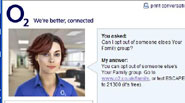
O2’s – Ask Lucy
O2’s virtual avatar is much more realistic. Lucy is a virtual character. She pops up in her own little window with a cheery greeting. She sways from side to side slightly, presumably to imitate breathing. Every so often, her mouth drops open a bit. But you can tell she’s not a real human, because she never, ever blinks.
Lucy is very good at answering questions, though. Comprehensive answers are given instantly on any aspect of O2’s product range. Links are provided to relevant pages and the customer doesn’t have to do much sifting through alternative scenarios. Ask Lucy would perhaps be improved by the addition of sound, as it’s slightly odd to see a virtual character move its mouth as if to speak, nod its head vigorously, but not actually say anything.

World Voyager Female Avatar
Sometimes virtual reality avatars can seem a bit bizarre.
World Voyager Vacations provides an example. The travel website has two avatars, one male and one female, that act as a kind of introduction to each of the various pages on the site.

World Voyager Male Avatar
Whilst the avatars are animated fully and have sound, they don’t respond to customer queries. Instead they advertise the various cruises and package deals the company provides. There isn’t any room for interactivity.
This adds a great comic element, but unfortunately isn’t much use to customers.
Alternatives to virtual reality avatars
Live chat
One of the main alternatives to VR avatars is live chat with a customer service agent. Many customers prefer to communicate without using the telephone, yet still want human interaction. For the customer, an option to chat live with an agent is obviously more likely to deliver the answer they need quickly, but for the company it is still labour intensive to run.
‘How to’ videos
Video can be a very effective tool for guiding customers through common issues. By creating a library of videos to help resolve frequently asked questions, companies can deflect a substantial number of calls. The downside is that the videos must be clear and easy to understand – otherwise they may create more problems than they solve.
Better search engines

Matthew Brown
Search engine technology is improving constantly. If the efficiency of searches on a product support website improves, customers will be able to find solutions to their queries more easily and the number resorting to phone contact will fall. Looking at a search-engine update could be worthwhile.
Web self-service
Certain products are well served by online self-service systems. For example, a simple step-by-step FAQ system could offer customers multiple-choice answers and pathways to guide them to an answer, with an option of agent contact at the end. An advantage of this is that it would allow the choice of a range of options – so even if a customer had used an inappropriate search term, they may still stand a good chance of finding the right answer.
Matthew Brown is the features writer for Call Centre Helper
Do you have experience with virtual reality avatars? If so, share your thoughts below.
Author: Jo Robinson
Published On: 23rd Mar 2011 - Last modified: 18th Feb 2020
Read more about - Technology, Avatars, Customer Service, CX




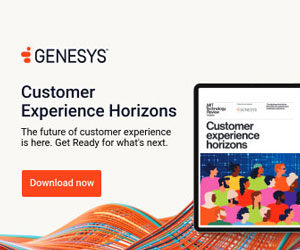








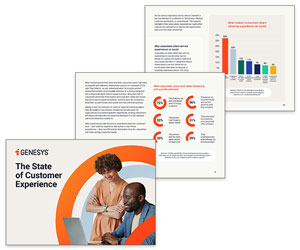
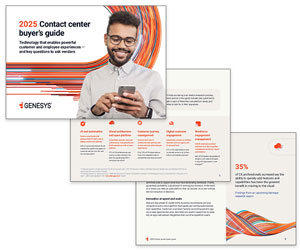
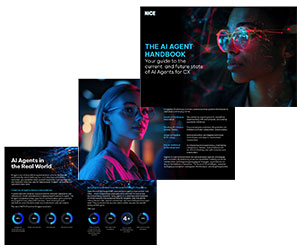

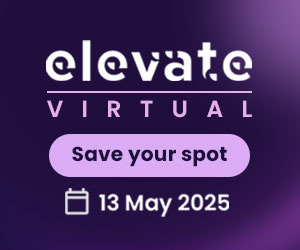




Matthew/Ian, thanks for this article!!!!
I have a few things to add:
-also known as: “virtual agents, chat bots, virtual consultants and concierges, avatars”. We’ll reveal our list of 127 (no typo!!) synonyms list this Monday!
-Cultural factors in Japan and China. Interesting… do you have example as well? I’d love to see this in practice.
-Agents are still essential
This technology is progressing slow. VERY slow. As opposed to all media technology, understanding of natural language has been a topic of research since the sixties, we’re making progress but it’s a long way to go. In the mean time, every year, avatars get smarter and will answer questions previously tackled by live agents. Every year this process is repeated until the very last specialist never gets a call anymore. I’m talking about 2030.